“One of the most beautiful towns on the Adriatic coast, Perast, is my favourite place on the Bay of Kotor…
With 17 Baroque palaces, 19 churches but scarcely more than 250 residents, Perast is a tiny town packed with history and legend.
It might be just a 20-minute drive away from popular Kotor, but Perast has a totally different vibe.” – 13 Things to Do in Perast, the Loveliest Town on the Bay of Kotor – Emily Lush
I have no doubt that the quote above is true. Perast certainly is a beautiful city.
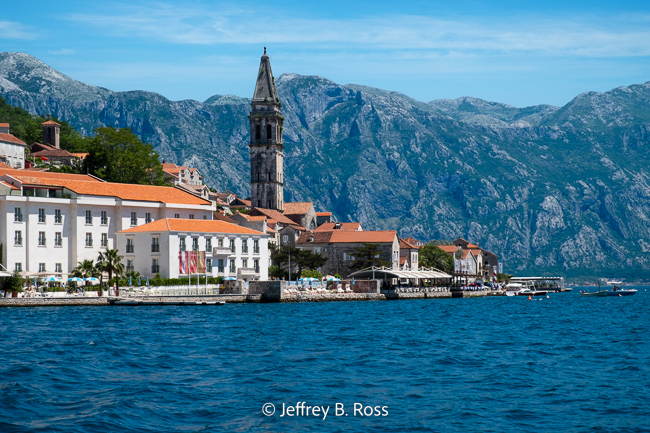
Our visit to Perast had a defined purpose and that was to see what many would claim is the number one attraction, Our Lady of the Rocks Roman Catholic Church.
There are two islands directly off the coast of Perast. The Benedictine Monastery of St. George can be seen on the left which is not open to the public and Our Lady of the Rocks is on the right.
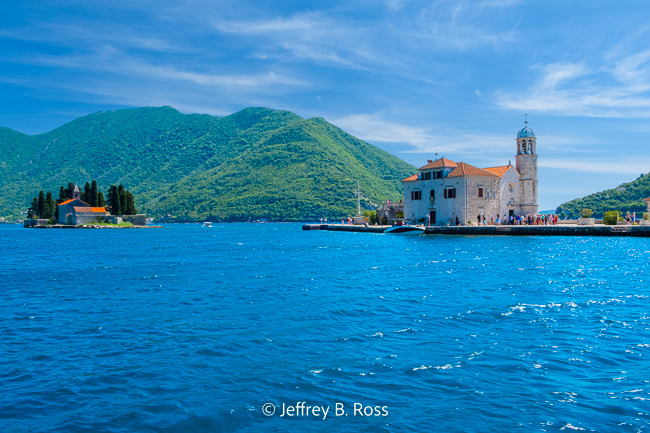
Our Lady of the Rocks is constructed on a man-made island. Two fishermen apparently discovered an image of the Virgin Mary at that location in 1452 and this was enough to convince the town that there was destined to be a chapel on that site. Read more about the legend of Our Lady of the Rocks Chapel and its development HERE
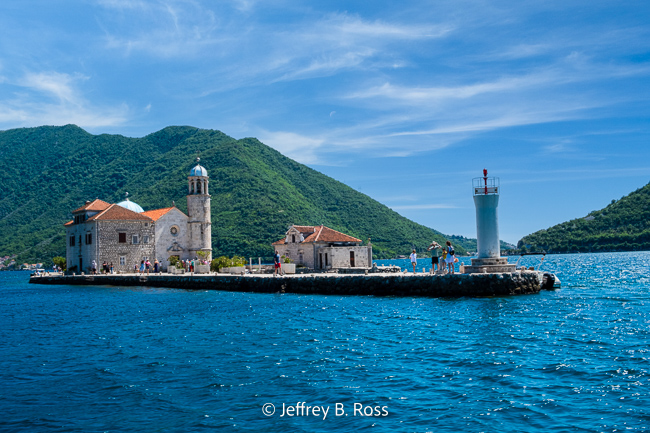
Though small, the beautiful landmark is full of charm and worthy of careful exploration.
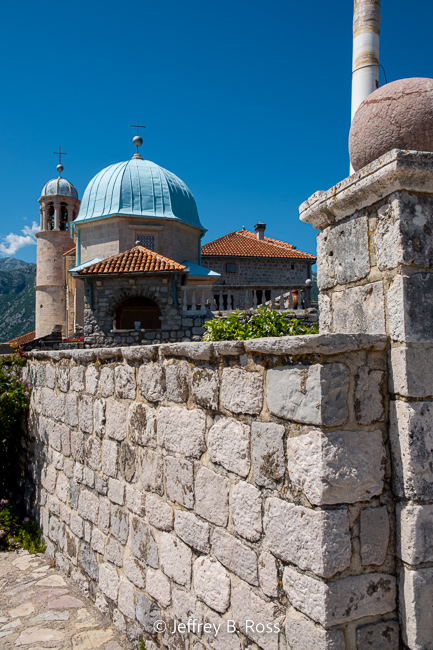
The most notable feature is the distinctive blue dome.
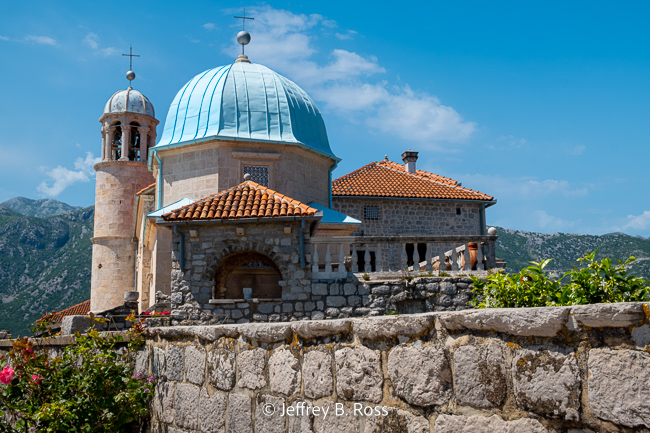
The sanctuary is very well appointed with attractive religious statuary and ornaments and the detailed altar is aesthetically framed against deep red walls.
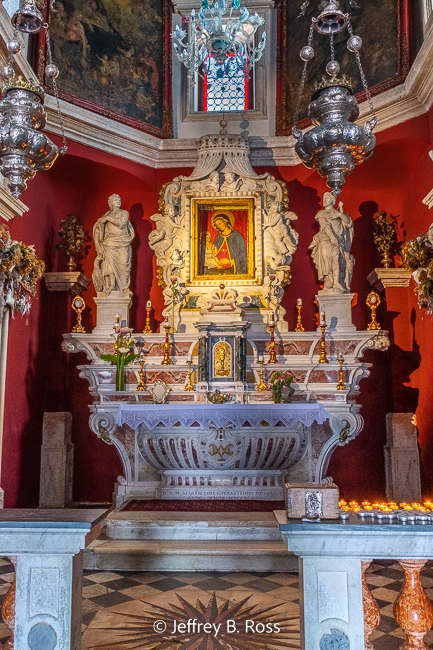
Perhaps hoping to garner blessings for recent nuptials, brides hang bouquets above the sanctuary doorway.
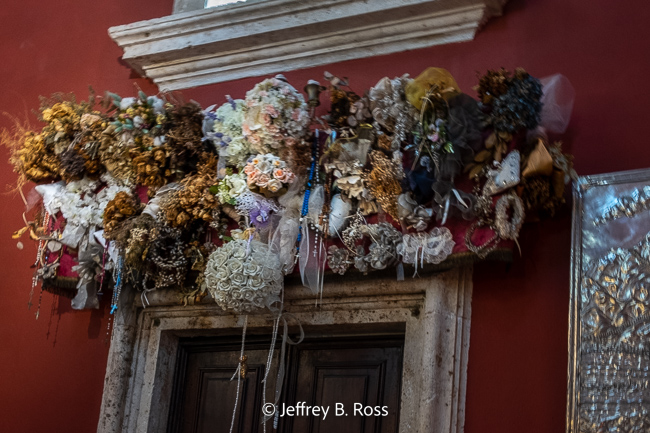
The picturesque surroundings encourage visitors to walk around the perimeter of the island.
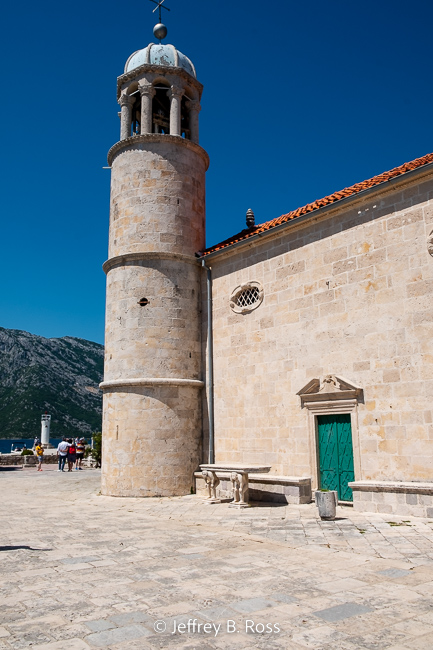
It was fun to seek out the interesting details such as sculptures of muscular ancients holding the bench for those seeking a place to rest.

Tourists are tempted to look back toward Perast through the windows and gates to take in the beauty of the town from a distant perspective.
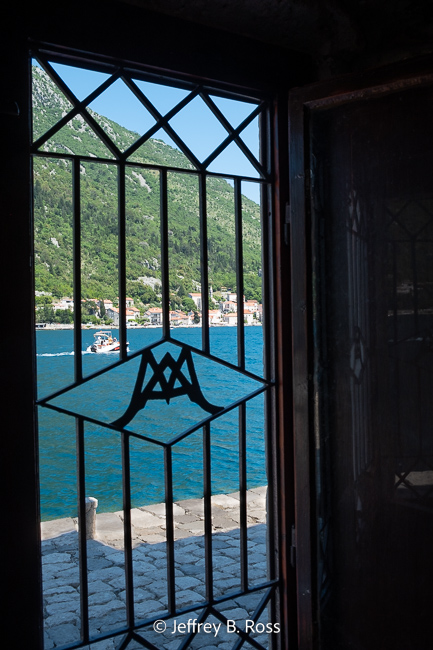
The island is a bustling place with numerous boatloads of people coming and going.
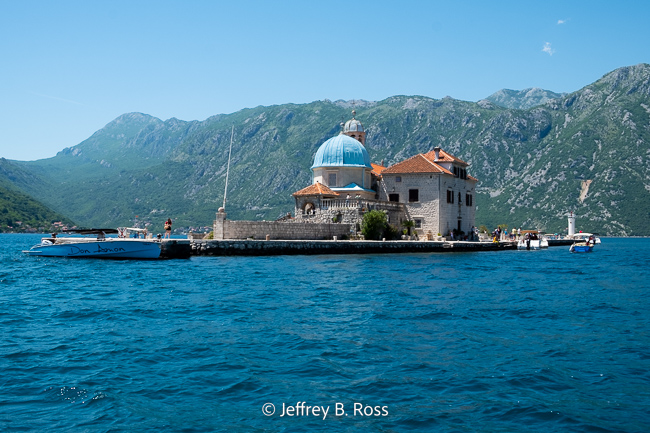
Another beautiful scene unfolds while looking southeast from Our Lady of the Church toward St. George Island.
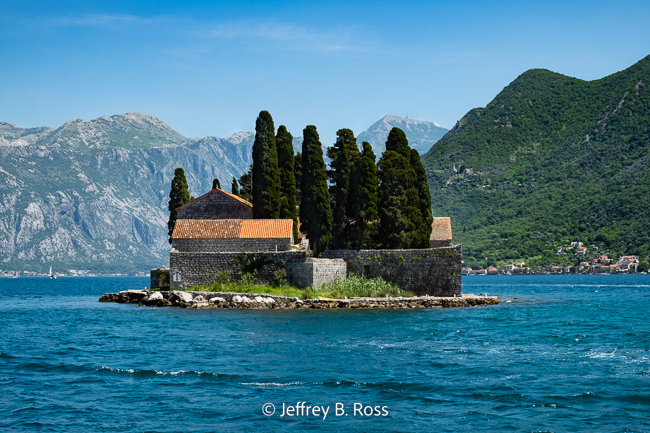
This was a spectacular day visiting Kotor and Perast!
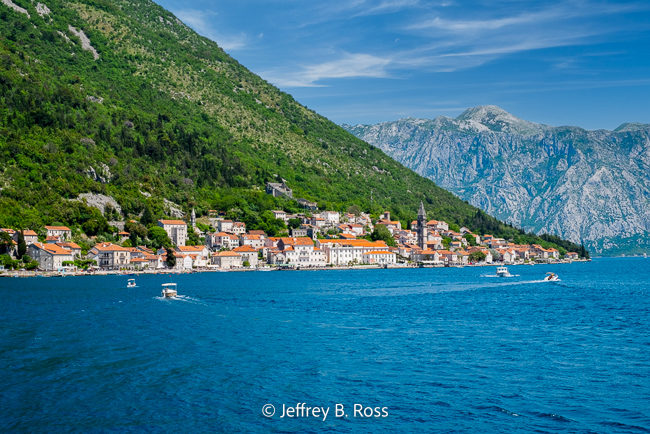
Notes:
See previous posts in this series:
Dubrovnik, Croatia – Pearl of the Adriatic
Old Town Dubrovnik – Above it all
Old Town Dubrovnik – The Low Down
Dubrovnik from the Adriatic and Mt. Srd
Montenegro & The Walled City of Kotor